Reviews
Stanley Kubrick
UK/USA, 1980
Credits
Review by Jenny Jediny
Posted on 12 March 2010
Source Warner Home Video Blu-ray
Related articles
Reviews:
The Shining by Leo
Categories Kubrick
Stanley Kubrick’s fascination with the male ego continues with The Shining. We’ve witnessed Humbert Humbert’s masochistic, self-induced humiliation at the hands of a nymphet, General Jack D. Ripper’s quest to preserve male bodily fluids, and later, Dr. Bill Harford’s emasculation at his wife’s mere contemplation of an affair. Whatever one’s complaints may be about Kubrick in regards to his underwritten female characters, the men in Kubrick’s films are a wealth of insight into insecurity. In turn, Jack Torrance, armed with his “duty” of caring for the Overlook Hotel, joins the ranks as a terrifying, homicidal father.
If any Kubrick film has benefited most from hindsight, it may be The Shining. The only Kubrick that holds the distinction of a Razzie nomination, The Shining carried the weight of seeming both an unworthy adaptation of Stephen King’s immensely popular novel (fans and King himself dismissed the film) and Kubrick’s first venture into the recurrently underestimated horror genre. At the time, horror had gone from blockbuster (The Exorcist, The Omen) to low-budget slasher (The Texas Chainsaw Massacre, Halloween), but Kubrick’s approach avoids both (the exception is his casting of mega-star Jack Nicholson) and instead situates a Gothic-tinged haunted house within a rich psychological take on family misery.
The horror within the Torrance family isn’t definitively pinned down. While the novel blatantly points to Jack’s alcoholism - an issue certainly referred to in the film - Kubrick remains ambiguous about Jack’s ensuing madness once he and his family are isolated at the Overlook. Their everyday dysfunction is pronounced in bits and pieces: for example, Jack and Wendy’s stiff use of pet names, calling one another “hun” and “babe” in front of the Overlook staff, later contrasted with Jack’s condescending snarl as he tells Wendy that her very presence is ruining his writing. There’s something inherently sympathetic (and clever) in casting Nicholson as Jack Torrance, as his overpowering celebrity masks his character’s cruelty; Jack manages to get laughs when telling his wife to fuck off, even when it’s been established that this is a man who broke his child’s arm in a drunken rage.
These early scenes set up the contrast between the disturbing reality of the Torrance family and the fantastic horror that awaits them. Jack’s interview at the film’s opening reveals the tale of Grady butchering his household, and Danny’s subsequent “shining” only whets the viewer’s appetite for more macabre. A conversation between Wendy and a doctor about Danny’s “spell” reveals their grim family history, as Wendy confesses the event that brought on not only Danny’s episodes, but also his “imaginary friend” Tony. The saturated reds and blues of the Torrance household, such as the kitchen where Wendy and Danny eat lunch, are as childlike as the colors in Wendy’s dress, a cross between a doll’s smock and 40s housewife garb. The distinction of Wendy’s outfit is painfully evident when she speaks with the doctor, a woman in a modern brown pantsuit. Wendy voices the story of abuse with a smile on her face, commenting that “it’s just one of those things,” and conceding that at least it brought her husband on the wagon, as a reaction shot reveals the doctor’s shocked face. Unlike Nicholson’s Jack, Shelley Duvall’s Wendy elicits ire from viewers, both for her naïveté and helplessness, despite her pitiable state.
Wendy’s failure to grasp both her and Danny’s dire situation, and the violent ineptitude Jack suffers from - alcoholism, permanent writer’s block, and inability to hold down a job - is enhanced by their isolation at the Overlook, creating a primitive survival scenario. Kubrick hired novelist Diane Johnson as a co-screenwriter, both for her writing skills and background in Gothic literature, a course she taught at UC Berkeley.1 Johnson’s literary background may have provided the script inspiration that King’s novel could not, insomuch as American gothic literature focuses on the family, which underwent significant societal changes at the turn of the century. There was a shift in household power as children were sentimentalized and men were asked to curb their tempers, treat their families in a gentler manner, and to yield power to their wives. Patriarchal violence skyrocketed, and for the first time numerous accounts of domestic violence became the basis for popular literature. Stories were lifted straight from newspapers with their violent details accented for readers’ morbid delight, and the majority of these tales dealt with murderous occurrences from everyday homes.2
While the action in The Shining eventually breaks down to familial discord, as mother/son versus father/haunted hotel, the film takes its time in building up Jack’s budding allegiance to the Overlook. Jack seems particularly sensitive to implications of violence early on in The Shining, as he wrestles with both his own demons and the hotel’s. The back-to- back sequences of the film entitled SATURDAY and MONDAY can be singled out as an excellent example of Jack’s slowly splitting personality. SATURDAY features what is perhaps the iconic moment of The Shining: Danny’s confrontation with the Grady daughters. Kubrick’s steadicam (his first film utilizing the camera) brings us round and round sharp corners on Danny’s Big Wheel, until our fears are realized. Something horrible does in fact appear: the girls ask Danny to come play, “forever and ever and ever” as images of their axed bodies grotesquely flash by. Danny covers his eyes and upon opening them, finds the girls have disappeared, and tells himself (through Tony) that they aren’t real but “just like pictures in a book.”
Immediately following this scene is MONDAY. As Jack naps, Danny asks to go up to the family quarters (where the Grady girls appeared in the prior scene) to find a toy; Wendy concedes so long as Danny does not wake his father. The scene cuts to Danny opening to door to the apartment, as we zoom into Jack sitting awake on the bed. The swift turn of the camera is reminiscent of the twist we so recently took around the corner only to face the horror of the murdered Grady twins. Jack asks Danny to come and sit with him on the bed. What follows is an uncomfortable and eerie conversation between father and son, as Jack asks Danny how he likes the hotel, and tells Danny that he wishes they could live there “forever and ever and ever.” When Danny asks Jack if he would ever hurt him or his mother, Jack seems to snap back for a moment, angry and asking if his mother told him such things before denying that he would ever harm either of them.
Following the terrifying scene with the Grady sisters, the moment between Jack and Danny seems flat and warped, and not frightening in the way one is used to in a horror film. However, upon repeat viewings the scene between father and son is far more frightening than what Danny accurately calls “pictures in a book.” Kubrick’s comparison between the ghosts of the hotel and the monstrous horror enveloping Jack is intricately made; while the Grady sisters are in fact harmless spirits, Jack poses the true threat.
Or does he? There is the woman in Room 237, although it seems evident the Overlook uses her to harm Danny in order to further disconnect the family. Kubrick commented in a 1980 interview on his approach to horror:
About the only law that I think relates to the genre is that you should try not to explain, to find neat explanations for what happens, and that the object of the thing is to produce a sense of the uncanny. Freud in his essay on the uncanny wrote that the sense of the uncanny is the only emotion which is more powerfully expressed in art than in life, which I found very illuminating; it didn’t help writing the screenplay, but I think it’s an interesting insight into the genre.3
While even Jack mentions families “eating each other up” (in answer to Danny’s question about the Donner party), it’s detrimental to explain away everything in The Shining. One of the enduring aspects of the film is that it does in fact scare the bejesus out of nearly everyone who sees it, and a large part of that is due to its fantastic imagery and sound design: the Grady twins, the reflection of REDRUM in the mirror, the rush of blood from the elevator; the ballroom party; to the way the big wheel moving from carpet to wood reflects a pounding heartbeat, both Danny’s and the viewer’s. As much as the ghosts of the Overlook push Jack’s buttons, Kubrick successfully pushes ours—the result is a film that still frightens, no matter how may layers you may peel away from it.
- Vicente Molina Foix. “An Interview With Stanley Kubrick.” (1980) The Stanley Kubrick Archives. Alison Castle, Editor. Taschen, April 2005.↩
- Karen Halttumen. Murder Most Foul; The Killer and the American Gothic Imagination. Harvard University Press, MA; 1998. Page 136.↩
- Vicente Molina Foix. “An Interview With Stanley Kubrick.”↩
More Kubrick
-
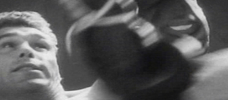
Stanley Kubrick’s Early Documentaries
1951-53 -
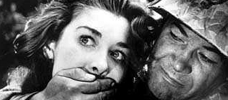
Fear and Desire
1953 -
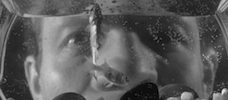
Killer’s Kiss
1955 -
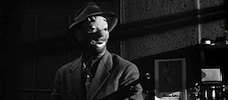
The Killing
1956 -
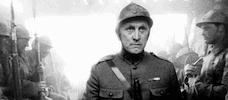
Paths of Glory
1957 -
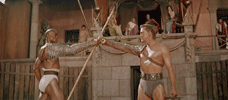
Spartacus
1960 -

Lolita
1962 -
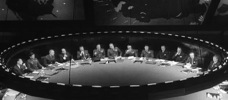
Dr. Strangelove or: How I Learned to Stop Worrying and Love the Bomb
1964 -

2001: A Space Odyssey
1968 -
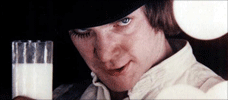
A Clockwork Orange
1971 -
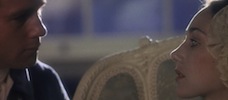
Barry Lyndon
1975 -
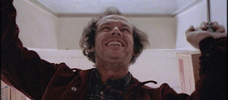
The Shining
1980 -
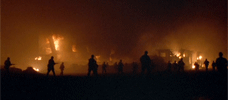
Full Metal Jacket
1987 -
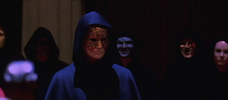
Eyes Wide Shut
1999 -

A.I.
2001
We don’t do comments anymore, but you may contact us here or find us on Twitter or Facebook.



